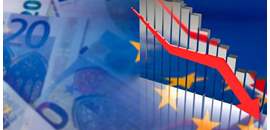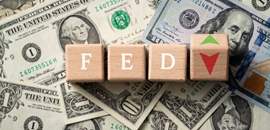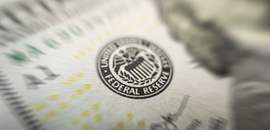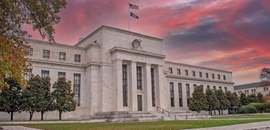U.S. Economy Performs Better Than Expected
The U.S. economy performed better than expected by virtually every yardstick in 2023. According to the Federal Reserve’s latest economic projections, real GDP exceeded expectations, expanding by 2.6 percent. Unemployment remained low at 3.8 percent, and inflation, as measured by the Personal Consumption Expenditures deflator, slowed to 2.8 percent.
Achieving a Near-Perfect Economic Landing
From this perspective, not only did the U.S. economy avoid a much-feared recession, but it also achieved a nearly perfect landing.
The progress in reducing inflation has enabled the Fed to keep interest rates on hold since the July Federal Open Market Committee (FOMC) meeting. Meanwhile, following the December FOMC meeting, the Fed signaled it will likely pivot policy in the coming year and lower interest rates.
The result has been a powerful rally in financial markets. Yields on 10-year Treasuries plummeted from a high of 5 percent in late October to below 4 percent. The Dow Jones Industrial Average soared to an all-time high above 37,000, while the S&P 500 Index and Nasdaq 100 Index returned 22 percent and 42 percent, respectively, during the year.
Yet, despite this, public opinion polls indicate the vast majority of Americans believe the economy is in trouble.
A Yahoo Finance/Ipsos survey of registered voters in early November found that most voters feel the U.S. economy is fairing worse than usual, and many are pessimistic about the coming year. The vast majority (78 percent) also believe the U.S. economy is doing the same or worse relative to other developed economies, even though economic and financial data suggest otherwise.
Potential Explanations for This Discontent
1. Inflation Spike
The primary reason for their discontent is that inflation spiked to a four-decade high during the COVID-19 pandemic, and higher prices resulted in a significant loss of their purchasing power. A recent Blueprint/YouGov poll found that just 7 percent of respondents were mainly concerned about jobs, while nearly two-thirds were worried about prices.
2. Uninformed Regarding the Economy
Another possibility is that many voters are uninformed about the economy, as supporters of President Biden contend. However, in a recent New York Times guest commentary, Steven Rattner, who served in the Obama administration, concluded that voters he questioned have valid reasons for their negativity.
3. The Younger Generation & Housing Costs
A third reason is the majority of Americans believe the younger generation is likely to have a lower standard of living than their parents. According to a Bloomberg commentary, nearly half of all Americans aged 18-29 live with their parents, the highest share since the Great Depression; this partly reflects how unaffordable homes have become, which has also increased the cost of renting.Why, then, are investors optimistic about the U.S. economy?
Contrary to popular opinion, I believe investors realize that the U.S. economy has outperformed most others. Europe’s economy is on the cusp of a recession, and China’s economy has faltered in recent years, with many observers questioning whether its economic miracle is over.This partly reflects a high degree of U.S. labor mobility. When millions of workers lost their jobs or became housebound as the COVID-19 pandemic struck, many Americans became self-employed and entered the gig workforce. This is testimony to the rapid expansion of the digital economy in America that has helped keep unemployment low. The Bureau of Economic Analysis estimates that as of 2018, it is the fastest-growing sector since 2006, with an average annual growth rate of 6.8 percent, or four times more than the overall economy.
U.S. multinational corporations are also global leaders. They dominate the global rankings in terms of market capitalization: Four of the five largest companies in the world — Apple ($3 trillion), Microsoft ($2.8 trillion), Alphabet ($1.7 trillion) and Amazon ($1.5 trillion) — are headquartered in the U.S., and only five in the top 20 are outside the U.S.
This is not a recent phenomenon. The U.S. stock market has outperformed international markets for the past 15 years mainly because the share of tech companies is the largest sector in the S&P 500 Index — representing 28 percent of the weight — versus 7 percent for the Morgan Stanley Capital International Europe Index and 13 percent for the Tokyo Stock Price Index.
Inflation Dynamics & Economic Projections
Looking ahead, investors see a bright future for U.S. technology with the rapid deployment of artificial intelligence that has the potential to boost productivity materially in the coming decades. As John Thornhill, innovation editor of the Financial Times, observes: “The conjugation of modern technology tends to go: the U.S. innovates, China emulates and Europe regulates.”
In short, the key difference in perspectives is that many voters have focused on large price increases since the pandemic and not accounting for what is happening outside the U.S. By comparison, investors are focusing on the direction of inflation, and they are encouraged that the Fed will lower interest rates as inflation recedes towards its 2 percent target.
U.S. inflation, therefore, will have a significant bearing on both the markets and the election in the coming year. If it continues to decline, swing voters may alter their views of the economy, and Biden’s standings in the polls could rise. However, if inflation stalls and the Fed keeps rates on hold, Biden will continue to face an uphill battle in convincing voters that the economy is on the right track.
Finally, as voters head for the polls, they invariably will consider whether they are better off than they were four years ago. In doing so, however, they should also account for how far the U.S. economy has come since the pandemic struck.
A version of this article was posted to TheHill.com on December 22, 2023.
This publication has been distributed for informational purposes only and should not be considered as investment advice or a recommendation of any particular security, strategy, or investment product. Opinions expressed in this commentary reflect subjective judgments of the author based on the current market conditions at the time of writing and are subject to change without notice. Information and statistics contained herein have been obtained from sources believed to reliable but are not guaranteed to be accurate or complete. Past performance is not indicative of future results. © 2023 Fort Washington Investment Advisors, Inc.





























